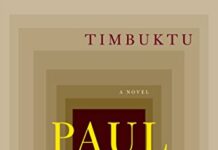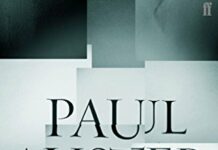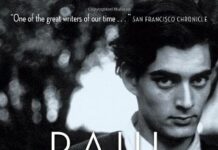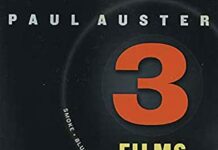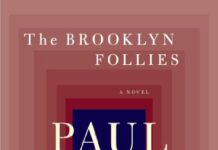
Ebook Info
- Published: 2017
- Number of pages: 882 pages
- Format: EPUB
- File Size: 0.97 MB
- Authors: Paul Auster
Description
* * * Shortlisted for the Man Booker Prize * * *Named a Best Book of the Year by The Washington Post, The New York Times Book Review, NPR, The Globe and Mail, Kirkus Reviews, Huffington Post, and The Spectator UK“An epic bildungsroman . . . . Original and complex . . . . A monumental assemblage of competing and complementary fictions, a novel that contains multitudes.”—Tom Perrotta, The New York Times Book Review“A stunningly ambitious novel, and a pleasure to read. . . . An incredibly moving, true journey.”—NPR New York Times Bestseller,Los Angeles Times Bestseller,Boston Globe Bestseller, National Indiebound BestsellerPaul Auster’s greatest, most heartbreaking and satisfying novel—a sweeping and surprising story of birthright and possibility, of love and of life itself.Nearly two weeks early, on March 3, 1947, in the maternity ward of Beth Israel Hospital in Newark, New Jersey, Archibald Isaac Ferguson, the one and only child of Rose and Stanley Ferguson, is born. From that single beginning, Ferguson’s life will take four simultaneous and independent fictional paths. Four identical Fergusons made of the same DNA, four boys who are the same boy, go on to lead four parallel and entirely different lives. Family fortunes diverge. Athletic skills and sex lives and friendships and intellectual passions contrast. Each Ferguson falls under the spell of the magnificent Amy Schneiderman, yet each Amy and each Ferguson have a relationship like no other. Meanwhile, readers will take in each Ferguson’s pleasures and ache from each Ferguson’s pains, as the mortal plot of each Ferguson’s life rushes on. As inventive and dexterously constructed as anything Paul Auster has ever written, yet with a passion for realism and a great tenderness and fierce attachment to history and to life itself that readers have never seen from Auster before. 4 3 2 1 is a marvelous and unforgettably affecting tour de force.
User’s Reviews
Reviews from Amazon users which were colected at the time this book was published on the website:
⭐I wish I could say my exposure to Paul Auster came through some sort of literary network, but that is not correct. I saw the movie Smoke on vhs in 2017 and after being moved to tears by the brilliant ending, as well as Forest Whitaker’s performance, I had to know who was behind it. I also around the same time while looking for rare vhs tape (yes I still buy them) found a movie from Harvey Keitel’s peak 90’s era called Lulu Under The Bridge.I found out after looking into Smoke that Lulu was Auster’s one and only film written and directed.I then purchased 4321 wanting to start off with his longest novel which happens to be his latest.I am not going to go into detail about the story line. I will talk about the structure of the book and how it can be used as a mental tool for people who appreciate art. I will also talk about what a twist ending is and the context in which it is presented here and in this knock down any criticism I have seen about the ending.The end result is thoroughly satisfying experience that takes the reader on an experience i can only compare to Nabokov, due to the multilevel way in which the art can be utilized in life.This novel, if read and understood can be a permanent tool, especially for artistic people or people who can think in an abstract way.This book is experimental but is actually written in his most straight forward way. Basically it is written traditionally but veers off course at times to a drastic extent and in a good way, as this veering is the experimental aspect.To begin this book hands down is a big deal. I will focus for a moment of a negative review which being paraphrased went something like calling this book a bad joke. That comment is amazing to me but i can see how the last part of the book could be confusing to someone who does not know how to process an experimental novel that is heavily philosophical and is meant to be pondered on after the book is finished. The reviewer who called it a bad joke seemed to focus on the story without any understanding of how to process a narrative that breaches of into segments that shift in reality.This book reminded me of Ada or Adore by Nabokov in that it has what I call a fail safe mechanism that delivers a multi educational experience that works on multiple levels. What I mean by this is, even if you dislike the characters and what they go through there is a. the historical aspects and b.the unconventional structure. b.the inner love letter to literature, film and music that is spot on.I have read many historical fiction books and this one really felt like it was 50% historical fiction. Auster showcases the socioeconomic climate as being crazy never failing to bypass stereotypical timelines such as 67’s summer of love–that was not what was going on in Newark-(Newark is a key setting). There is so much spot on information about the 50’s and especially 60’s, I really felt like is was living in the chaos of those times. By making the main characters come of age in the mid to late 60’s- it makes for a realistic and convincing way to show how insane the climate was with the main themes being 1. draft dodging 2. civil rights 3. authority/students. That is just one lever of this fail safe mechanism I am in the process of defining. The other element of the story other than tons of historical information is the heavy emphasis on art in general mainly concentrating on literature and film with a good amount of music mentioned. There are tons of books and films mentioned that i am happy to say i recognized a lot of them making me feel somewhat cultured.–One element that may throw some people off is yes this novel is very autobiographical in certain ways to Auster’s life and it is about an overly brilliant kid. Ferguson is the main character who is depicted in 4 different story but with different inner family changes. In one version of the 4 he is in a privileged family –in another he is in a struggling family–I will not go on to much about the intricacies of the plot line and go back to the multi meaning theme–I want to clear up something- i noticed a lot of the amazon reviewers keep saying it is too long. This is disgustingly subjective and is irrelevant. I personally like a long story any day over a short one–then again i love Victorian novels so maybe i am not a good judge of attention in relation to reading. I feel the length complains are just a commercial reaction in our times. I feel complaints about book length is like complaining about literature in general and showing to the world that you admit tingly have a short attention span.I will now break down the main criticism of the book being a “bad joke”. I feel this remark is unacceptable and it is simply wrong. Iwill also break down the complaint about the constant and descriptive sex scenes. These 2 themes go hand in hand and will contain a major spoiler. I do not like to spoil books but i feel this one is so multi layered it will not really matter. To say the book is a bad joke(like i have read in critical reviews) is to only completely misunderstand the ending which only makes the whole story that much stronger. The constant sex in all of the Ferguson stories is 100% related to the ending and 100% necessary. It was hard for me to read the gay sex scenes and this was the point. Pay attention to the scenes– they are bluntly described rather than being trashy or for erotic effect.SPOILER– The end of the book deals with the reader finding out that all of the stories were written by Ferguson the father commenting on his2 dead sons as well as a death of a childhood friend.The graphic sex was Ferguson the writer getting to know his estranged and dead sons by living through the hardest aspects of their differences.The gay scenes were the father trying to understand his son by making him a character.The end result of this novel is the love of literature as a way of life. This book is about artists for artists and the end shows the reader a technique –or the best technique for getting through the hardest moments of life. Ferguson who was writing the book 4321 takes himself on a self reflecting journey as well as a journey to discover his lost family.I am proud of Paul Auster who apparently wrote the 2nd story line to be related to a death he experienced at camp when he was young.To make this work of art even more wild–the Ferguson-dad- who mirrored his sons, the dead friend, the 60’s etc–was then mirrored by Auster the actual author.The end result ends up being a totally aesthetically fulfilling experience.I am so surprised any professional reviewer could of completely missed not only say 5 of the meaning of the book but finished it thinking it was a joke or charade of some sort.
⭐I normally don’t spend time reviewing the books I read on a weekly, monthly or yearly-basis but I felt that this very unusual book – probably the strangest and most eccentric tome I have ever encountered – warrants more than a few sentences of commentary.I have read several of Paul Auster’s novels and he ranks as one of my favorite contemporary writers. My husband’s psychiatrist raved about this 870 page book by Auster and I thought it would be a good “first read” as I embarked on a new life as a retiree in Mexico.The book is essentially divided into seven chapters of four different iterations of lives of one main character, Archie Ferguson. Archie’s personality remains constant throughout the four iterations – as do the basic personalities and values of his mother, father, aunts, uncles, cousins, etc. – but the details and circumstances of life change with the four different “stories”. Essentially, each of the four “Archie” stories (1.1, 2.1, 3.1, 4.1, etc combined.)could conceivably constitute a novel in and of themselves. I could have used an explanation of this fact before I started reading this weighty book; I might have been less confused if I was provided with a roadmap of the structure of the book before I embarked on this lengthy reading project.I have rated this book with 4.5 stars, given the author’s endeavor and creativity. I also really enjoyed (as I do for all of Auster’s reads) the gift of gab that is infused in the novel as well as the twists and turns that Archie’s lives’ take.The following are some of the other things I both did and did not appreciate about the book:* The structure of the overall novel was extremely confusing and I had difficulty remembering the details of Archie’s Life #1 Chapter #1.1 Before after reading Lives #2, #3, and #4. It was the discontinuity between iterations, the new life chapter introduced after reading three other iterations of the previous life chapters, that caused that confusion. At one point I even stopped reading the novel for a few weeks to take a rest. As I mentioned before, a roadmap might have helped! Move over, Dostoyevsky- keeping track of these characters and life situations was a real challenge!* The writing itself, although prolific and filled with creative and exciting language, consists of series of run-on sentences which, at first, was very hard for me to attend to. As I continued to read, I did get used to the structure of the prose.* Being a child of the 60s and 70s myself, approximately the same age as Archie as he went through high school and college, I relished the correct and obviously well-researched historical context that was shared in the novel: the Kennedy assassination, War in Vietnam, campus riots, etc.All this being said, I would recommend the book. I would have a notebook by my side to try to keep track of what happens in each of the Archie iterations at each juncture of his life. Perhaps an introduction by the author to explain the structure of the book would be helpful.
⭐The author, Paul Auster, has a lovely flowing writing style and the plot is pleasant enough in a kind of TV movie way, but ultimately I found this book very predictable – despite the twists. The book follows the exploits of a boy called Ferguson as he grows up in New Jersey, then through college and to the edge of adulthood. Without spoiling the plot, Ferguson’s life has several moments of divergence of varying severity. So far, so good. The problem I have with this book has been the same across a few of the titles I’ve read on the Booker shortlist: they are just formulaic. Got some baseball/basketball nostalgia? Check. Got both race and gender issues clumsily wedged in? Check. Got references to as many books and films as you can, just to show the reader how clever you are? Check. Got references to some Manhattan eateries? Check. A couple of times now, but especially with this book, the author has a character wanting to become something different or outgrow his or her hometown, yet I’ve been left with the feeling the book has been written and appraised by the same group of people within spitting distance of The New Yorker’s office. And when they travel, God, it’s always Paris. Prepare for a name check of obscure directors, eateries and ‘insights’ into French life (yes, we know Gitanes are strong). Finally, England is eternally described as if it were the set of Brief Encounters. Ferguson visits London in the 60s – swinging London, fashionable, musical London. It’s described as if it’s some dank Middle Earth, with no hint of irony, even though the main character lives in the cosmopolitan Mecca that is New Jersey. If you’ve read anything from the Booker list in the past few years that is anything close to a coming of age story of a kid from the east coast, you’ve already read this book.
⭐Through 4 variants of Archie Ferguson’s life story, Paul Auster shows the huge power and impact of contingency, (bi)sexuality, extended family lives, and political turmoil and upheaval on the development of young life in 1960s USA society. Ferguson’s intensive intellectual, artistic and love life is fashioned through this maelstrom. Extreme social conflict rages around racism and the Vietnam war. Auster blends keen observation, interpretation and imagination throughout this long read. He recounts Ferguson’s eclectic sex life in graphic detail as a powerful drive in personal experience and development, without this becoming either gratuitous or salacious. Ferguson’s journalist and author career may well be an autobiographical reflection. In Ferguson’s hilarious Hank and Frank shoe story, Auster appears to mock the imposed drive for meaning in literature, but perhaps the story really does address themes of slavery and Holocaust? Maybe Auster is warning us from trying to force meaning from his 4 3 2 1 story?
⭐Firstly I read a broad range of books, from trashy thrillers, non-fiction, to something like this a little more challenging. This is also the 4th Auster book I have read and I have always enjoyed him.Reading this is a little like running a marathon, it is not pleasant, at times not enjoyable and it is a hard slog. There are times mid way through this when I could have happily gave it one star or even stopped reading completely. However now finished I find the experience rewarding and I am happy that I have read it. I think it is the thought provoking nature of how a life can unwind in different directions that give the biggest payoff, The affect the book has more than the story itself.Certainly it could have done with a heavy edit. It is a monster and the time spent meandering and (I would argue) at times lost is a disappointment. However it is still a thought provoking tale set in a vivid telling of 20th century US history.My one piece of advice (I really wish I had this) is to take notes / reminders on the different strands of the story. To jump back to version 1 three chapters after reading versions 2,3 & 4 can be a little confusing trying to remember all the people / situations in the chapter you now start.
⭐This is the first time I have read a Paul Auster novel, but I know that when this appeared it was the first novel published by him in a number of years, and that this did take some years to write. At well over eight hundred pages long this is not a slim novel by any standard, but does it really give us much to ponder and admire? We are presented with our main character, Ferguson as he is usually just called, and we meet him in four alternate versions, although a number of the same characters pop up throughout, and there remains the same ambitions to a large degree, as well as some of the loves.Taking place mainly in the Fifties and Sixties the prose here is very good and this is stylish, but it starts to drag, and when you have finished it you soon forget which version of Ferguson did what, so whilst immersive when reading this, it soon becomes something that is not really held that much in the mind. Also, by the end this just starts to plod on with no oomph, which has probably led to the mixture of good and poor reviews that this produced in the media at the time of its appearance.We see Ferguson grow up, and indeed in one version unexpectedly die as we see how his life alters mainly due to whether his father died or not early on, and whether despite business problems, whether he was ripped off by one of his brothers. So we follow him through different circumstances, depending on how wealthy his parents are, and whether his father still remains alive, dies, and whether his mother remarries. With affairs and other incidents, we also see Ferguson coming of age with sexual experimentation and so on. Because ultimately we are following the same timeline, so we do have repetition at times, what with race relations, the assassination of JFK and so on.This is very much a marmite book, and although I found myself caught up in the differing stories whilst reading it, at the end of the day there was nothing to make me feel this was a standout novel. We are also very much reminded that this is a novel, especially near the end, as we are told of Ferguson writing a tale with four different versions of himself. A clever idea then and well enough executed, this just does not pack a punch or give us much of substance to sink our teeth into.
⭐This is a wonderful and intelligent in-depth look at the 4 different lives of the Jewish Ferguson born in March 1947 to Stanley and Rose. Set in New York and New Jersey, it is a novel full of details, it begins with giving us the disparate backgrounds and families of store owner Stanley and photographer Rose. It charts the relationship between Stanley and Rose and their heartbreaking attempts to have a child. Once Ferguson is born, we are given a non-linear but simultaneous life trajectory structured in distinct episodes for each Ferguson.It made me laugh when the first young Ferguson has every intention of marrying his mother! What Auster does is bring home how each different decision and event changes the life of Ferguson through an intense and tumultuous period of American social and political history of the 1960s up until the early 1970s. So we get the awareness of the fate of the Rosenbergs, the civil rights movement, the Vietnam War, and the protests in which Ferguson takes part.I found it difficult to remember which Ferguson is which at times, partly my fault but partly because whilst Ferguson has different lives, he is essentially the same person. He is a writer in every version of his life, his politics are progressive, and Amy is the girl he gets involved with albeit with differing results. He dwells on the nature of money and whether it should necessarily dictate that the family should, therefore, move into a bigger house just because they could. Auster captures the raw energy, vitality and intensity with which the young live their lives and the central role of an obsession with sex. I loved the cultural references such as the books and movies that marked the period. Different events in the family mark each Ferguson, such as the death of his father in an arson attack on the store. One Ferguson experiences an early death as a result of a lightning storm.This is a very long and ambitious novel which might not be to everyone’s taste and there are some extremely long sentences in it. I loved it, although it is not perfect and there are parts which tended to ramble a little too much. The prose is beautiful and I found the narrative a gripping read most of the time. Near the end, Auster informs us why the novel was structured as it is. Elements of the novel have been informed by the autobiographical details of the author’s life. Characters from his previous novels make an appearance in this book. Auster is connecting his life’s work and life brilliantly in this novel. This is essentially the story of the life and times of Paul Auster. A highly recommended read.
Keywords
Free Download 4 3 2 1: A Novel in EPUB format
4 3 2 1: A Novel EPUB Free Download
Download 4 3 2 1: A Novel 2017 EPUB Free
4 3 2 1: A Novel 2017 EPUB Free Download
Download 4 3 2 1: A Novel EPUB
Free Download Ebook 4 3 2 1: A Novel
